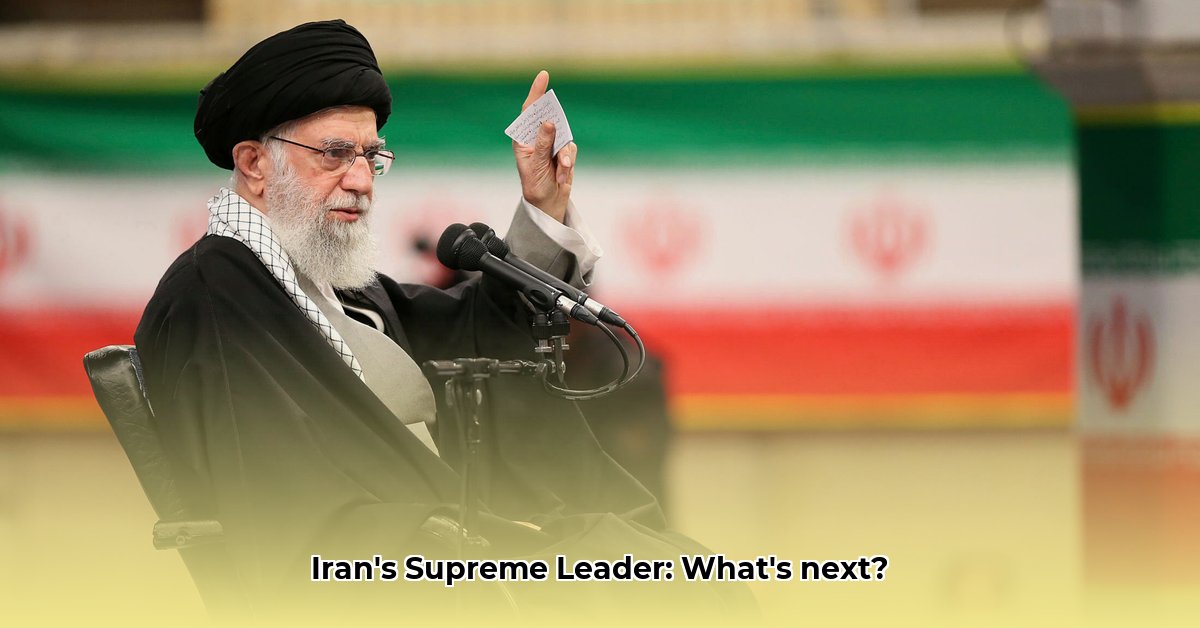
The Office of the Supreme Leader: Architect of Power
The Supreme Leader, or Leider, holds ultimate authority in Iran. This position, established after the 1979 revolution, exerts profound influence over the military, judiciary, and media, shaping domestic and foreign policy. The Leider's power, however, isn't absolute. While wielding considerable authority, they navigate a complex web of internal power dynamics and external pressures. This concentration of power brings both potential for stability and significant risk. How does this supreme authority function, and what checks, if any, exist to moderate its influence? The existing checks, primarily the Assembly of Experts, are demonstrably weak. Instead, the true power rests in its concentration, akin to a powerful engine potentially driving the country forward or spinning uncontrollably. It is a system designed for absolute power, which creates concerns about the long-term sustainability of such a concentrated position.
The Evolution of Power: From Khomeini to Khamenei and Beyond
Ayatollah Ruhollah Khomeini, the architect of the Islamic Republic, established the office of the Supreme Leader, setting a revolutionary tone. His successor, Ayatollah Ali Khamenei, adopted a more pragmatic approach, shaping Iran's domestic and foreign policies. This shift underscores the evolving nature of power within this seemingly monolithic structure. While the structure has remained constant, the style and emphasis have adapted to changing circumstances. This creates an undeniable question: How will this adaptation, or lack thereof, influence the future of Iran as future leaders take the reins?
Power Dynamics and Internal Challenges: A Delicate Balance
The Supreme Leader’s power is not unchecked. Powerful entities like the Islamic Revolutionary Guard Corps (IRGC) and the Basij militia exert considerable influence. Understanding the intricate interplay between these groups is crucial to deciphering Iranian politics. Is the Supreme Leader the ultimate arbiter, or is their power a delicate balance resulting from negotiations and compromises with other powerful factions? The reality is likely a complex interplay of influence and negotiation, a far cry from a straightforward dictatorship. This constant negotiation forms a significant challenge to the stability and predictability of Iranian governance.
The Future of the Supreme Leader: Risks and Uncertainties
Predicting the future of the office is challenging. Succession planning, inherently fraught with risk, is compounded by factors such as internal dissent fueled by economic hardship and social restrictions. International sanctions and diplomatic pressure further shape the trajectory.
Key Risks:
| Risk Category | Probability | Impact | Mitigation Strategies |
|---|---|---|---|
| Succession Crisis | High | Catastrophic | Institutional reforms; clear succession protocols |
| Internal Dissent | Medium | Significant | Economic reforms; addressing social grievances |
| External Intervention | Low | High | Strategic diplomacy; de-escalation |
| Economic Instability | Medium | Moderate | Economic diversification; international cooperation |
How Does Succession Planning Impact Iran's Supreme Leader Power Structure?
The selection of Iran's next Supreme Leader isn't a straightforward religious process; it's a complex political manoeuvre. The Assembly of Experts ostensibly chooses the successor, but the incumbent Supreme Leader's influence heavily shapes the outcome. This creates an illusion of a formal process behind closed doors, where powerful factions compete to advance their preferred candidates, demonstrating a clear link between political maneuvering and the potential for instability during a succession. Will the next succession follow the same pattern, or will new dynamics emerge? This question holds critical importance, not just for the country itself, but for the wider region and the global stage.
Three Pivotal Points:
- The seemingly formal process of selecting a Supreme Leader is heavily influenced by behind-the-scenes political maneuvering.
- Powerful factions compete to advance their preferred candidates, making the outcome far from predictable.
- The current Supreme Leader's health, and choice of successor candidates, deeply impacts the stability of the transition process.
Professor Alireza Nader, Senior Fellow at the Rand Corporation, notes: "The succession process is not simply a religious matter; it is deeply embedded within the political landscape of Iran, and the outcome significantly impacts the course of Iranian politics for years to come." This highlights the intricate relationship between religion, politics, and power within the Iranian system. The internal dynamics and potential for conflict during succession are a serious matter that requires continued observation and expert analysis.